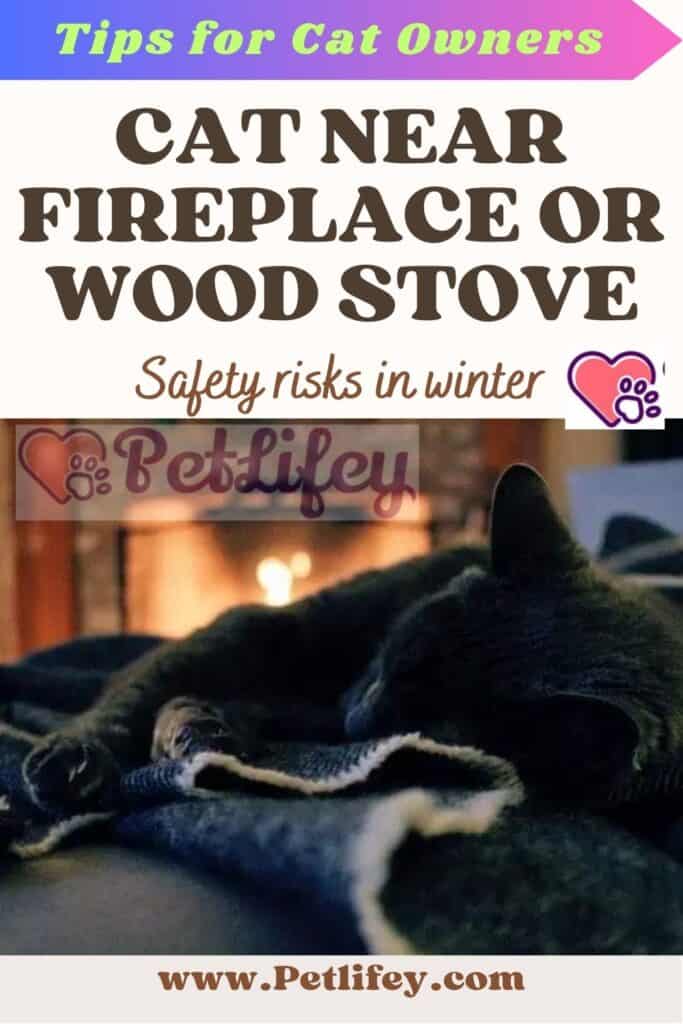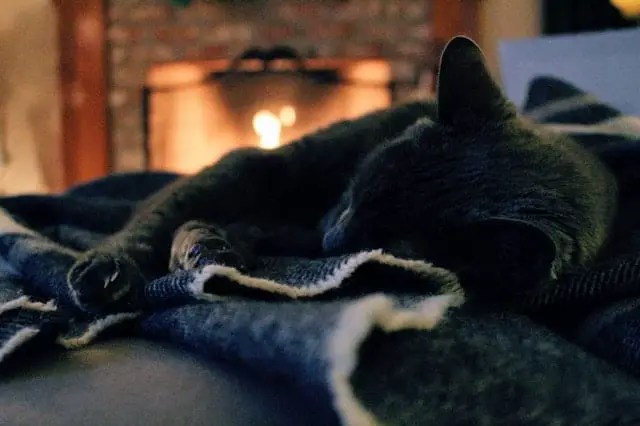
Who does not like a fireplace or a stove turned on in winter? Cats love heat, but let’s find out how to avoid the dangers of fire.
With the arrival of the cold seasons, the fireplaces in the house are lit to stay in front of the fire in the heat and in front of the relaxing spectacle that follows. Our cats love to curl up in front of the fireplace with us, but there may be dangers for the cat that we need to watch out for.
Problems for the cat in front of the fireplace
Those who love to stay indoors in front of a wood stove or a lit fireplace, perhaps huddled with their cat, should know that there are risks for the cat.
According to veterinary experts, among the main safety problems with wood-burning fireplaces is that the upper surface (the hood) often becomes extremely hot.
Cats tend to look for the hottest areas to sit in, and if our cat tries to jump on the fireplace, attracted by the heat, it may find themselves with burnt paws.
It is advisable to always supervise our cat when the fireplace or wood stove is lit, and to keep it away if necessary.
Burning fires can also cause sparks, perhaps setting fire to objects that are too close. There may therefore also be sparks that fall on the cat.
Any fire screens, gates and all the tools that are near the fire, in addition, overheat to the touch. The cat should not be too close.
In addition, it is better to keep any type of linen, fabric or any other potentially incendiable material at a safe distance.
But how can we keep our cat safe when the fireplace is lit?
How to keep the cat safe with the fireplace
A good idea to keep our cats safe, with the fireplace on, is to use a glass door or a metal screen in front of the fire, to keep the cat at a safe distance.
A safety distance of at least one meter in front of the fireplace is ideal, as well as a children’s gate to install to prevent the cat from approaching.
Similarly, we should keep all potentially incendiable and dangerous tools (chimney sticks, lighters, flammable liquids, etc.) behind such a barrier.
To make our cat happy, however, it may be useful to place a cot (perhaps his favorite) near the fireplace to feel the heat, but at a distance from danger.
This can protect our cat from the direct burns that would be possible if it jumped on – or even worse inside – the fireplace, or for the flying embers from the fire.
During the autumn and winter seasons, there is also a tendency to decorate the fireplace shelf. But despite the festive aspect, it is a big risk.
Hanging decorations, such as garlands, attract curious cats. It is therefore advisable to avoid them if we have cats in the house, which may get too close to the fireplace.
Other dangers for the cat: carbon monoxide
In addition to the danger of burns caused by fireplaces and wood stoves, another great risk factor is the fact that such heat sources produce large amounts of carbon monoxide.
Carbon monoxide creates a potential risk of poisoning for pets, but also for us humans.
Such a gas is odorless, colorless and tasteless. Not being able to recognize its presence, therefore, in any way, it is easy to understand that it is extremely dangerous.
To prevent problems with carbon monoxide in our homes, it is important to act in various ways:
- Working fireplaces must be cleaned and maintained regularly;
- Always keep the chimney and damper open;
- Install a carbon monoxide detector.
Symptoms of carbon monoxide poisoning in pets and humans are similar, such as dizziness and lack of coordination.
It can then worsen with difficulty breathing, drowsiness, and even loss of consciousness. But for cats, the symptoms can be other as well.
Cats may have difficulty breathing and start vomiting, but other symptoms to watch out for are:
- Cough;
- Cardiac arrhythmia;
- Seizures;
- Coma;
- Deafness;
- Blindness;
- Drowsiness and lethargy;
- Uncoordinated movements;
- Disorders in walking.
Treat and prevent poisoning

In case of suspected carbon monoxide poisoning, it is important for both cats and humans to take the person concerned out of the house immediately and call for help.
In the case of our cats, it is important to contact our veterinarian to check with a blood test an assessment of toxicity.
And just as in the case of the dangers for the cat related to burns, also for carbon monoxide it is essential to prevent the risk to the health of our cat.
It is better that the chimney of our fireplace is cleaned and checked by a professional once a year, and that the alarm detectors are installed.
Carbon monoxide detection alarms should be installed at least one on every level of the house, even near (or inside) the bedrooms.
These detectors must then be regularly tested, to verify their correct functioning, and replaced cyclically as suggested by the manufacturer (usually every 7 – 10 years).






